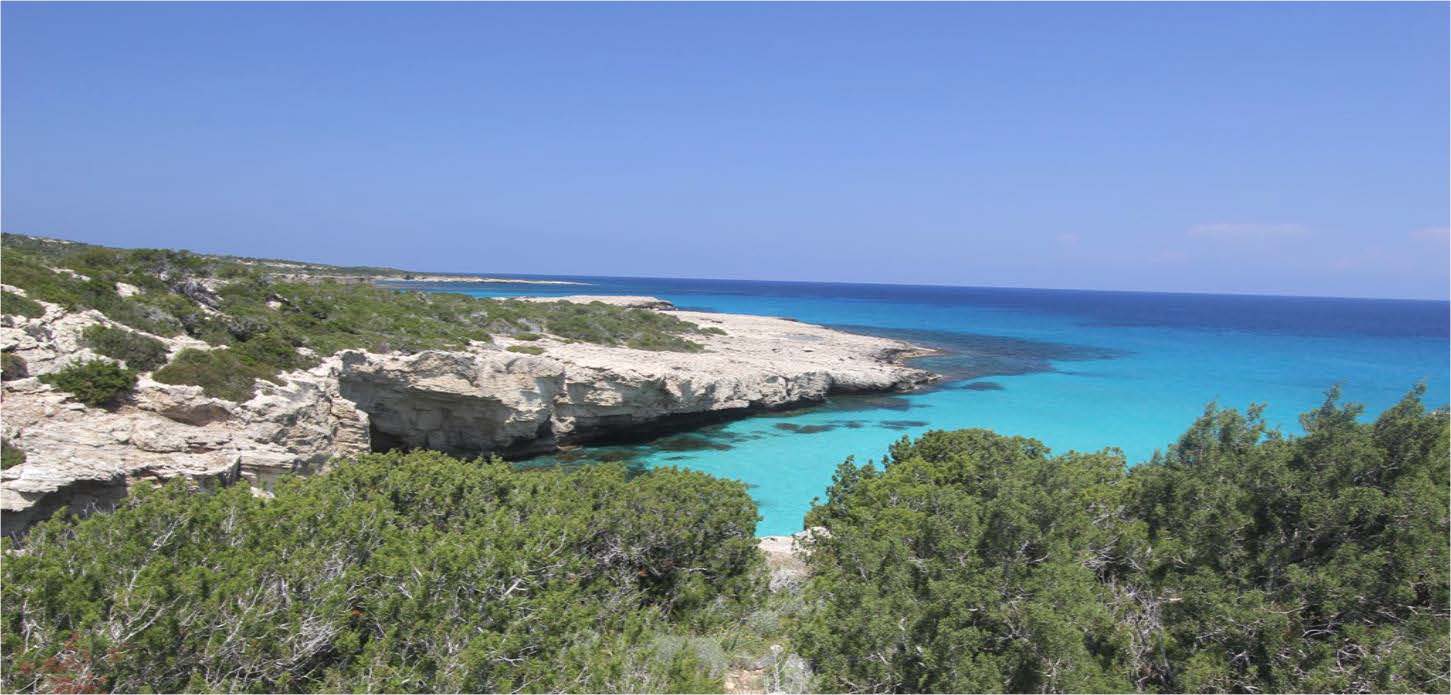New threats to the environment and without substantial solutions for private land and community revitalization Terra Cypria – the Cyprus Foundation for the Protection of the Environment, stresses that the Akamas Local Plan needs to be radically revised and reconfigurated to meet the local needs of the Akamas area. It must ensure the protection of the unique natural environment and at the same time formulate and find fair and practical solutions for those who are deprived of their development rights.
The unique image of Akamas with the wild natural beauty, in combination with the unique natural landscape, make the Akamas Peninsula one of the most important and beautiful natural areas of Cyprus. Part of the area is part of the European Network of Natura 2000 protected areas and needs special local management due to the environmental specificities of the area, of course taking into account the needs of the inhabitants of the surrounding villages. Mr. Christoforos Panagiotou, Policy Officer of Terra Cypria, notes: For such an important and special area as Akamas with such rich and important biodiversity but also the local communities, which for decades have been left by the state in promises, we would expect that the new (under preparation)
Akamas Local Plan (LP) would regulate the disorder and inactivity of the urban zoning of the area. We would expect that the main goal of this Plan would be the protection, management and promotion of the natural wealth of the area, the sustainable development, the revitalization of the communities but also to find serious solutions for the landowners.
On the contrary, says Mr. Panagiotou, the proposed LP contains a plethora of provisions that arecontrary to the principles of sustainable development and are incompatible with the sustainable management of the region. Unambiguous arrangements and solutions for equal treatment of citizens who have been deprived of development rights for decades, are not promoted. Although the terms of reference * set before the preparation of the Local Plan are clear, we believe that they were not fulfilled during the formation of the Akamas LP. Specifically, the terms of reference speak of the need for integrated development and preservation of the natural environment and landscape of the area so that future generations can enjoy it. Reading the various provisions and policies that are part of the proposed LP through the Strategic Environmental Impact Assessment (SEA), it is clear that they are in complete contradiction with the terms of reference that were initially set for the preparation of the Plan. Consequently, the entire natural area of Akamas is left exposed to permanent deterioration and to disorderly and scattered development within important areas of nature, important landscapes and areas of historical cultural and archaeological importance.
Some of these worrying proposals of the Akamas LP include:
- Visitable farm which will include accommodation and overnight infrastructure, retail facilities, restaurants, sports facilities, etc.
- Specialized Developments, ie large-volume developments and structured interventions outside the village’s development boundaries, which can be accompanied by a series of supporting infrastructures.
- Individual houses at a distance of up to 500m from development limits. It is now commonly accepted that this policy does not serve the purpose for which it was created and that it has been transformed from an initially basic social policy into a profit-making activity, in a way that opposes the concept of sustainable development and the principle of compact and integrated development.
- New Tourist Zone in Ineia where it creates a second core of development outside the core of the community and within agricultural land of high natural value (HNVF).
- New Quarry Zone in Androlykou where it is a serious threat both to the environment and the adjacent area of the Natura 2000 network and to the community of Androlykou. According to the SEA, the proposed zone will have, inter alia, negative effects on biodiversity, holistic loss of habitats, flora species, and displacement and disturbance of the largest and healthiest colony of the species Rousettus aegyptiacus (fruit bat) in Cyprus.
These and other proposals not only threaten the unique environment of the region, but are also a trap for the viability of existing businesses within the core of local communities. For example, the visitable farm is a coined term to describe essentially small hotel units that will offer various services and activities to the visitor, scattered throughout the Peninsula but also within protected areas of the European Natura 2000 Network. These “farms”, which require a minimum required land area of 5000m2 within agricultural zones Γα4 and Γα2 * and 6000m2 within Γα2, are a “Trojan horse” for tourism and commercial development mainly by a few large landowners, and will compete with the accommodation and catering business within the communities, while at the same time they will destroy the continuous natural environment of the area. It is really surprising that the Town Planning Council came up with proposals similar to those governing urban and suburban areas, without any perception that it causes permanent and irreparable destruction of Akamas, as it has been preserved for so many years by its inhabitants who love and preserve the area.
Contrary to what we read in the current proposals, we would expect to see proposals and solutions that would ensure that individuals who have development rights away from the residential core, would be compensated in efficient ways and would ensure the competitive advantage of the area which is the natural environment which attracts thousands of visitors to the area and communities. It is unfortunate that the state is not in a position to present a map of all private property within the Akamas LP area that potentially loses development rights in an effort to protect the environment. Without this simple technical exercise it is impossible for any technocrat to conclude the real satisfaction needs of the real beneficiaries in the area, and then to formulate policies to compensate them.
Exchanging land, compensation, expropriation and exploitation of existing unexploited residential areas in and around communities are some of the solutions we would expect to see. Even more innovative, we would expect to see the creation of separate legislation for the transfer of builtsurface ratio, a proposal that for years adorns unexploited, some archive warehouse of the Ministry of Interior.
Terra Cypria clearly emphasizes that the development model that should be followed in Akamas should take into account the specificity of Akamas but also the need to protect both the Natura 2000 area and the wider environment. At the same time it must ensure the equal treatment of residents with all Cypriot citizens. We regret the fact we call for the complete withdrawal and remodelling of the Akamas LP but at the same time, once again, we are putting ourselves at the disposal of the State Departments to discuss and explain our proposals that we believe will protect the integrity of Akamas and will also meet the needs of the people who are currently being wronged.
* The terms of reference of the proposed Local Plan Akamas can be found on page 61 of the SEA and
briefly state:
1. Organize the basic spatial functions and the rational distribution of land uses, in a way that ensures the optimal economic and functional organization of the settlements and the promotion of organized and integrated development.
2. Saving natural resources and preserving the natural environment of the Plan area.
3. Gradual upgrade of amenities, quality of life and level of service of the entire population and visitors.
4. Ensuring a balanced variety of compatible uses, where desired, and separating incompatible uses as much as possible, as well as resolving problems caused by conflicting uses.
5. Preservation and promotion of assets and areas of special, historical, cultural and architectural interest and the adoption of a program for the protection, preservation, regeneration and revitalization of traditional cores.
6. Sustainable management and promotion of the excellent landscape and of unique value, natural environment, so that future generations continue to enjoy them.




